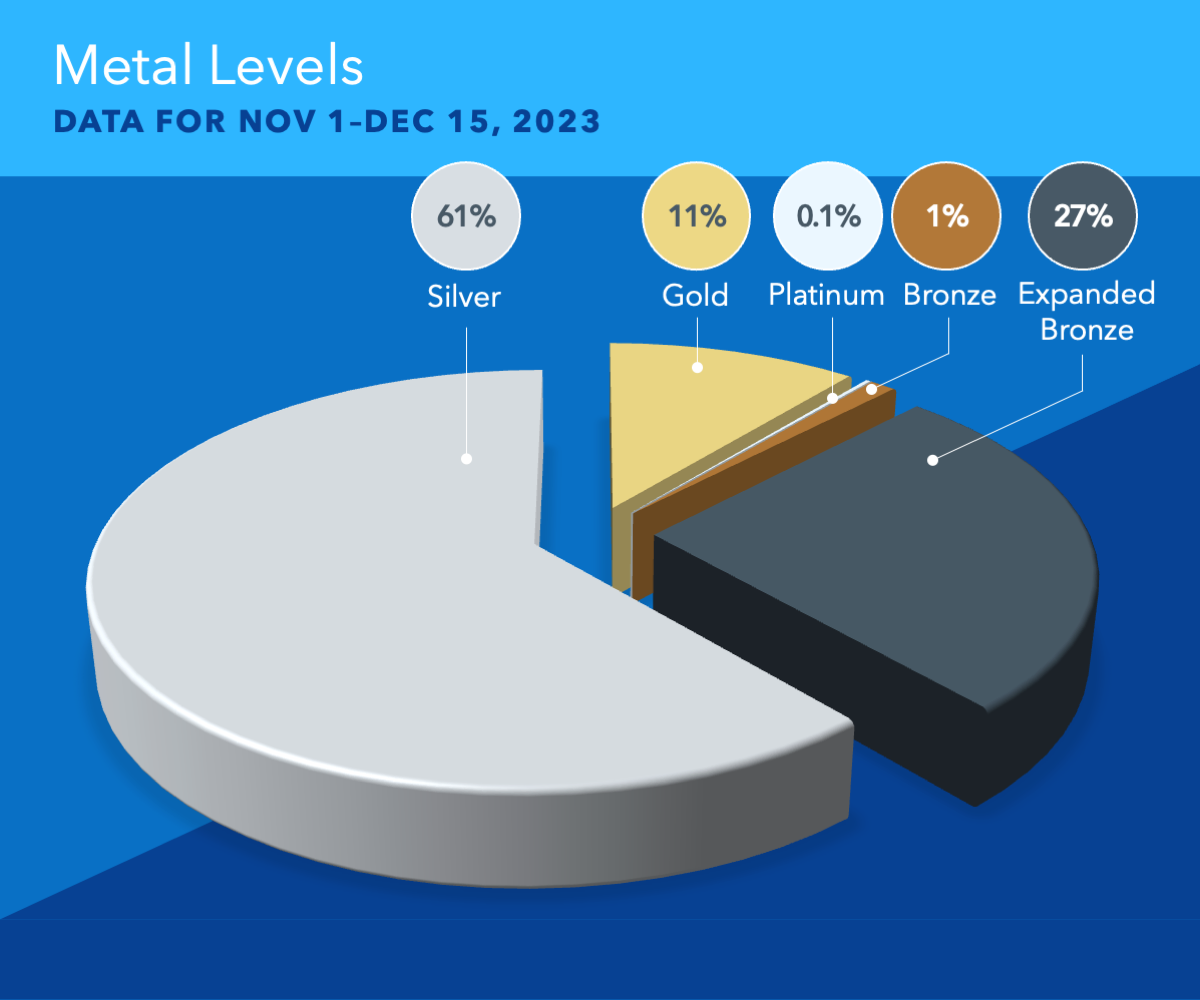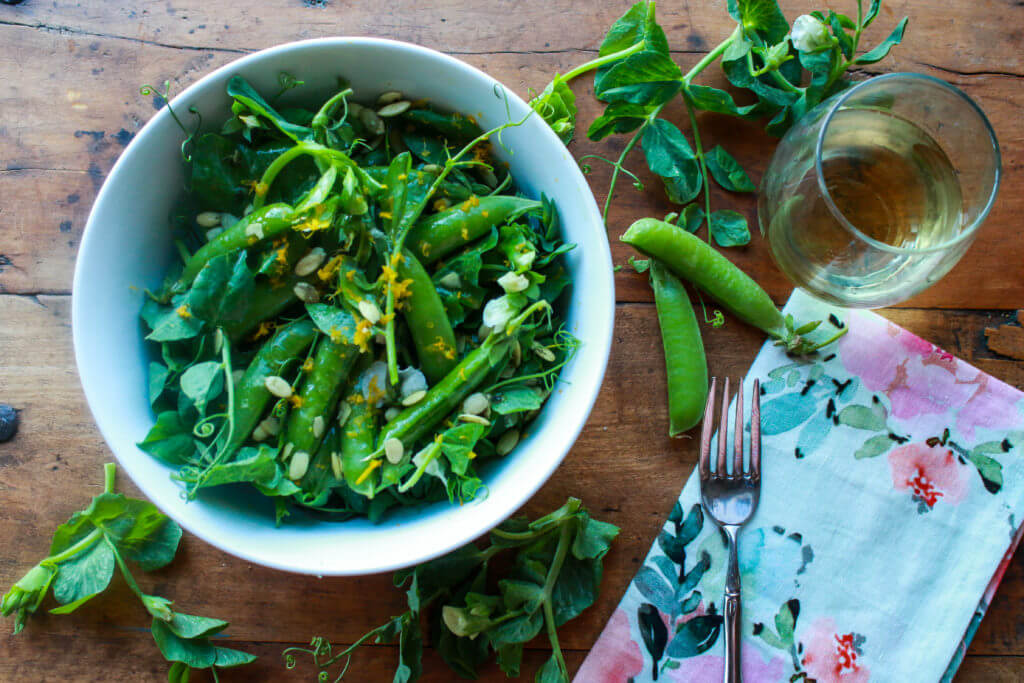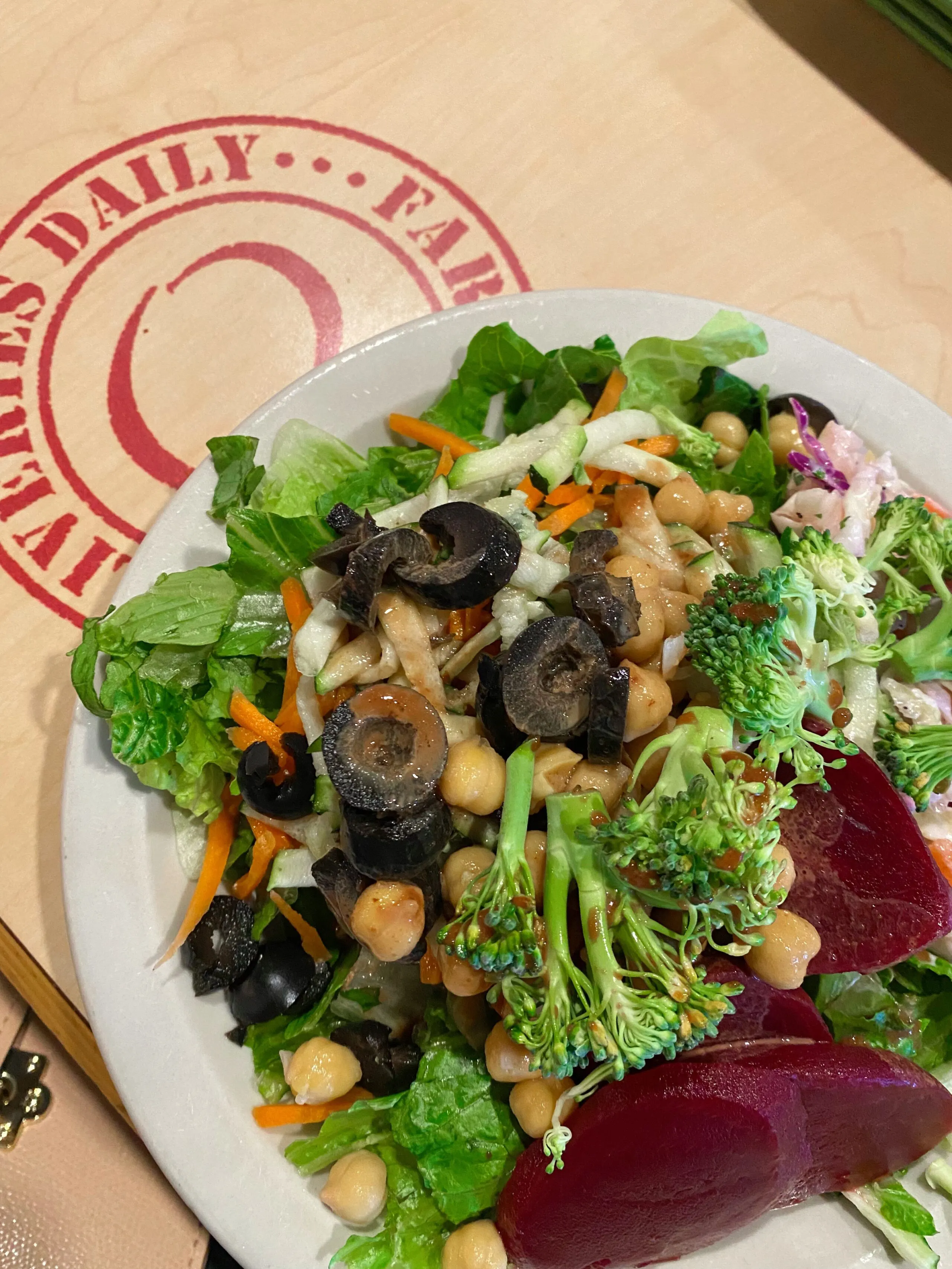[ad_1]
This tamale pie recipe is destined to become a favorite. It features a smoky, cheesy filling loaded with ground beef, corn, green chilis, and a touch of sour cream. The filling is topped off with a tamale-inspired masa crust and baked until it achieves a perfect golden brown topping.
These easy Tex-Mex casseroles are a guaranteed hit with my entire family. Whenever I’m in need of a delicious dinner, I opt for classic options like King Ranch Chicken Casserole, Taco Casserole, or my personal favorite, Salsa Verde Chicken and Rice Casserole.


Tamales have this awesome nostalgic vibe for me. You know, that warm, meaty goodness all snuggled up in a savory, kinda sweet masa? It’s just unbeatable! Enter this tamale pie: it’s like all the cozy feels of ground beef, corn, cheddar, and veggies, all hanging out in this smoky, earthy tamale sauce. Then, it’s all about that golden, cheesy masa harina crust on top that delivers all the tamale texture and flavor without the wrap. Seriously, I can’t stop digging into it.
Why You’ll Love This Tamale Pie Recipe
- Great Flavors. The combination of the smoky enchilada sauce, the savory ground beef, and the unique mild sweetness of the masa harina topping is top-notch. The flavors will warm you up from the inside out and have you coming back for your second bite real quick.
- One skillet meal. Aside from the bowl you’ll need to whisk together the ingredients for the masa topping, this recipe only requires one skillet, so cleanup is incredibly easy.
- Great for leftovers. I promise this tamale pie is even better the next day. The flavors get a chance to meld together and deepen. Make it ahead of time and enjoy it as the week goes on.
What You’ll Need
Grocery shopping time! Buckle up and head to your favorite market. Here are all the ingredients you will need to grab to make this easy tamale pie.
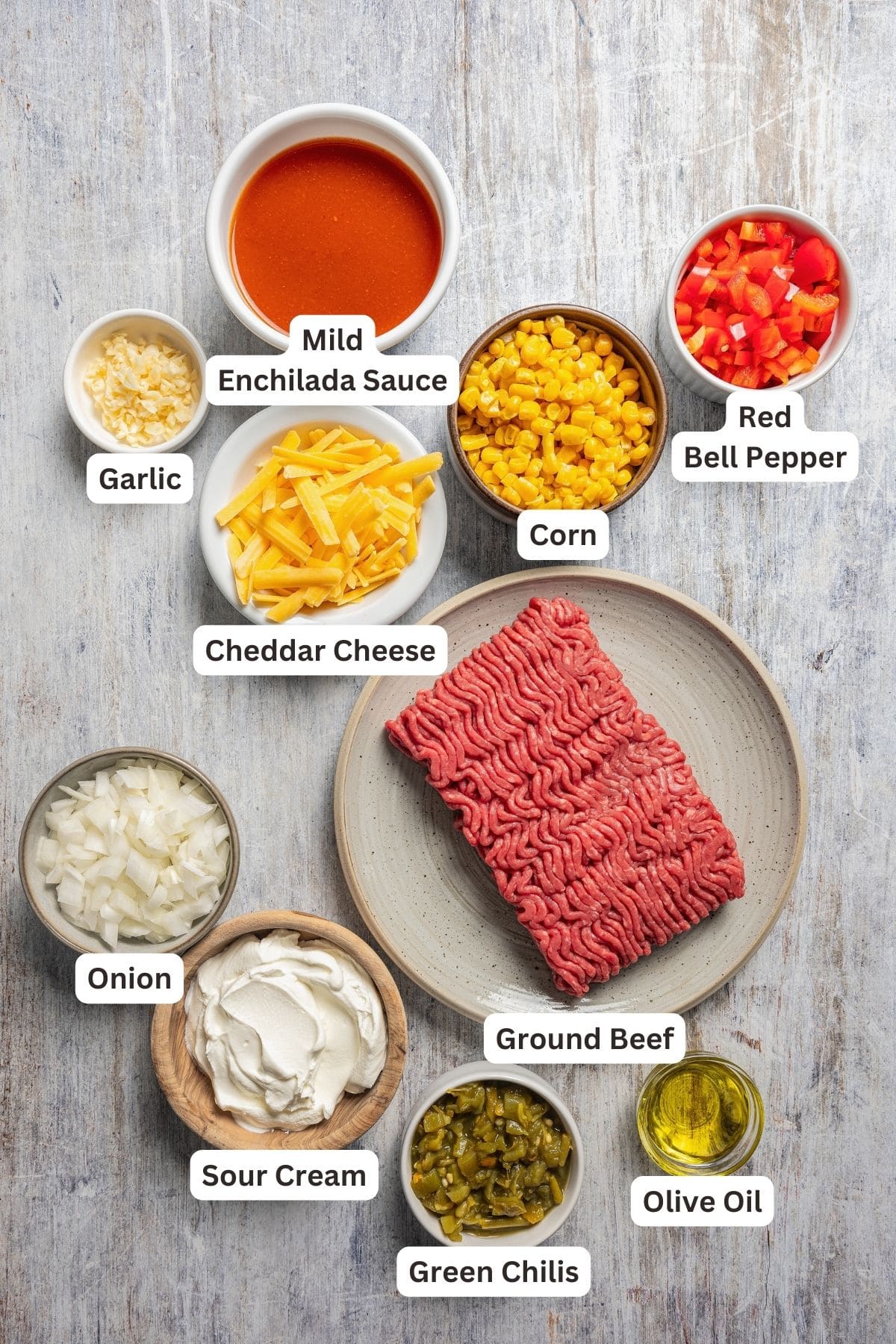

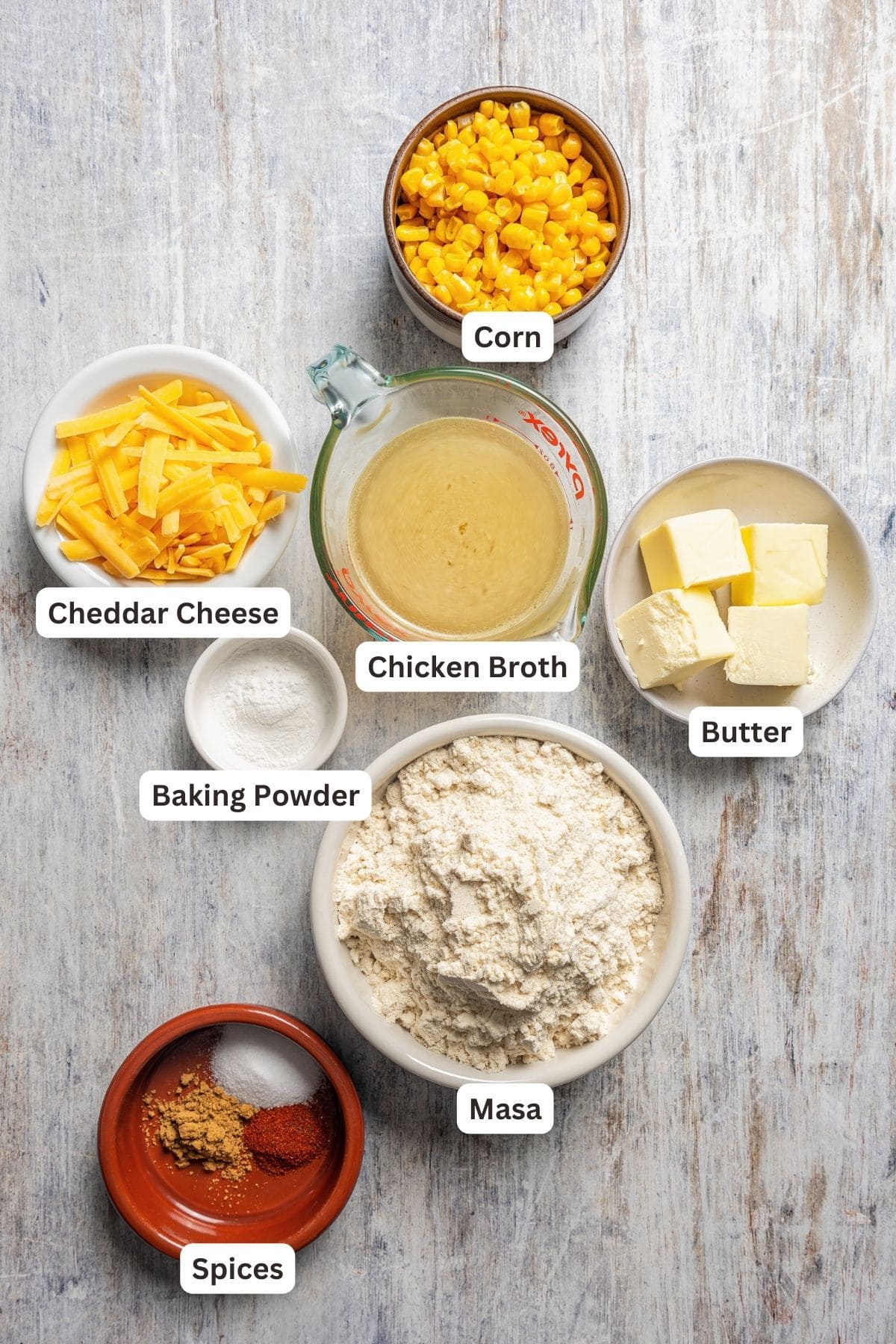

For the filling
- Olive oil – Used for sauteing the veggies and beef. You can use any neutral cooking oil here.
- Veggies – Onion, red bell pepper (any color will do), and garlic.
- Ground beef – I prefer 80/20, but leaner beef will work as well. You can also make this recipe using ground chicken, turkey, or pork. “Beyond Meat” would be a great option for vegetarians.
- Canned corn – Frozen corn will also do the trick. Just make sure to thaw the corn completely and pat it dry.
- Mild enchilada sauce – If you enjoy spice, feel free to select a spicier enchilada sauce.
- Canned diced green chilis
- Salt and Black Pepper: To enhance the flavors of the dish.
- Sour cream – The sour cream adds a lovely tangy richness to the filling.
- Shredded cheddar cheese – Pepper jack or crumbled Cojita cheese are also okay to use.
For the topping
- Masa harina – This is a relatively coarse flour made from dried corn kernels.
- Baking powder – The baking powder gives the perfect rise to the topping.
- Seasoning – Salt, smoked paprika, and ground cumin.
- Chicken broth – Vegetable or beef broth are acceptable substitutes.
- Melted butter
- Canned corn – Feel free to use frozen corn instead, but thaw it and pat it dry first.
- Shredded cheddar cheese
How To Make Tamale Pie
My recipe for tamale pie with masa is quite simple to make. Follow this step-by-step guide, from sautéing onions and bell peppers to baking a golden cornmeal crust, to make this delicious homemade comfort dish!
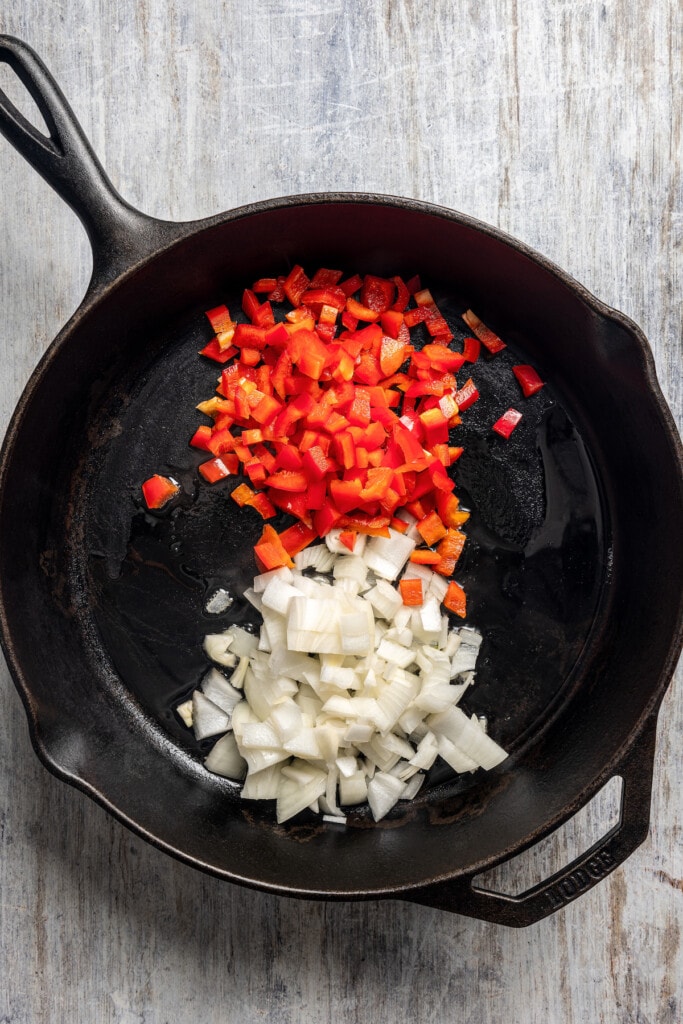

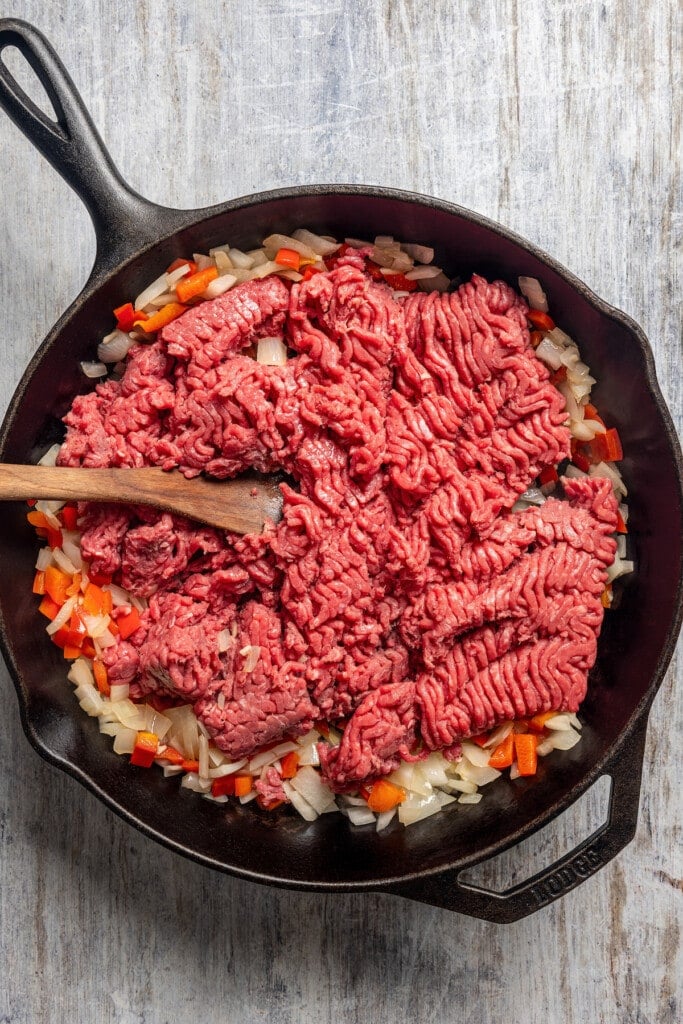

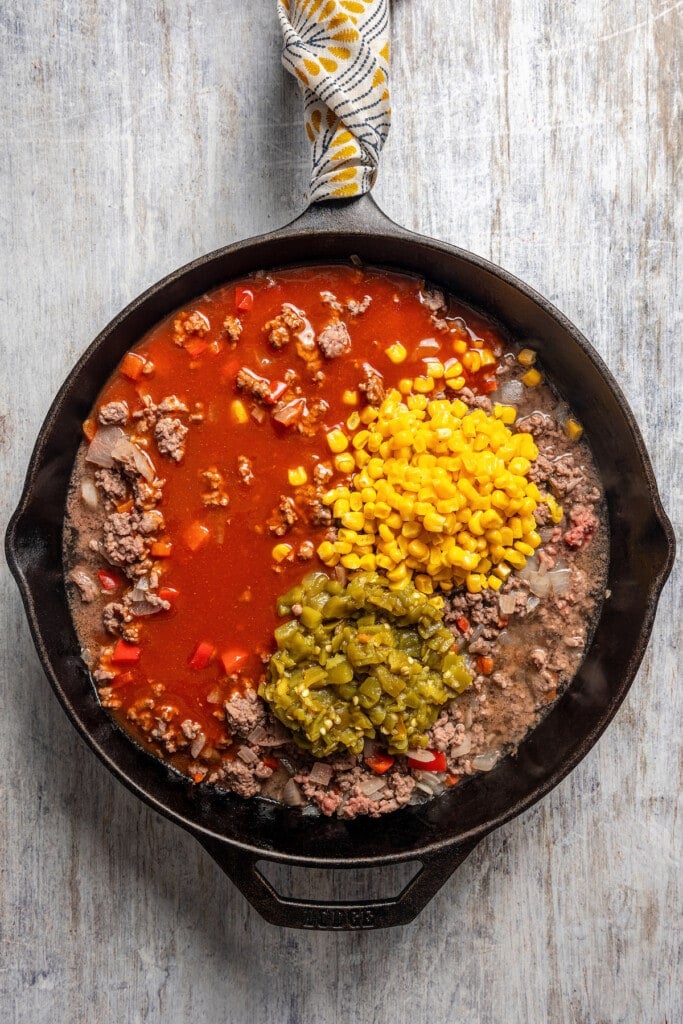



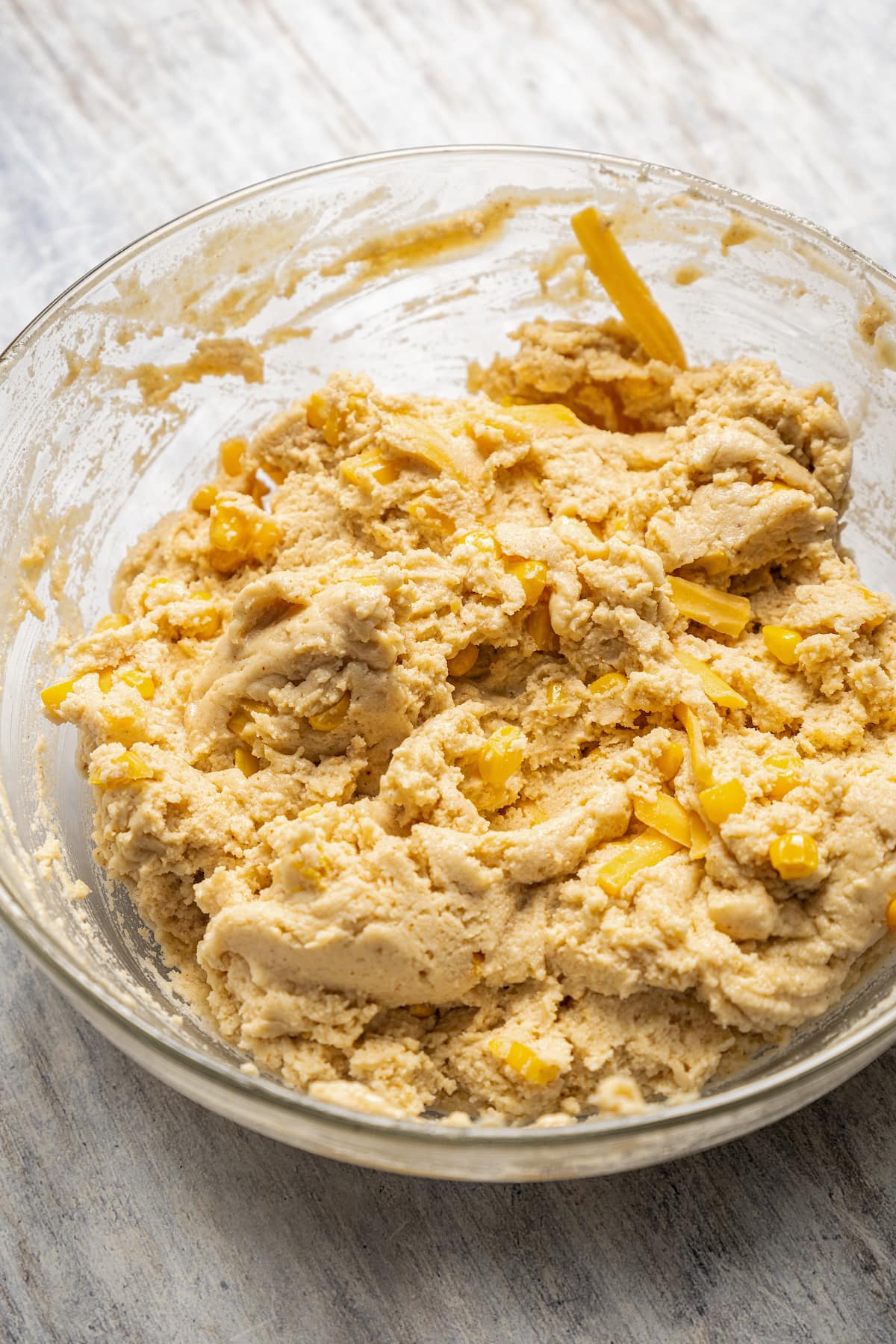

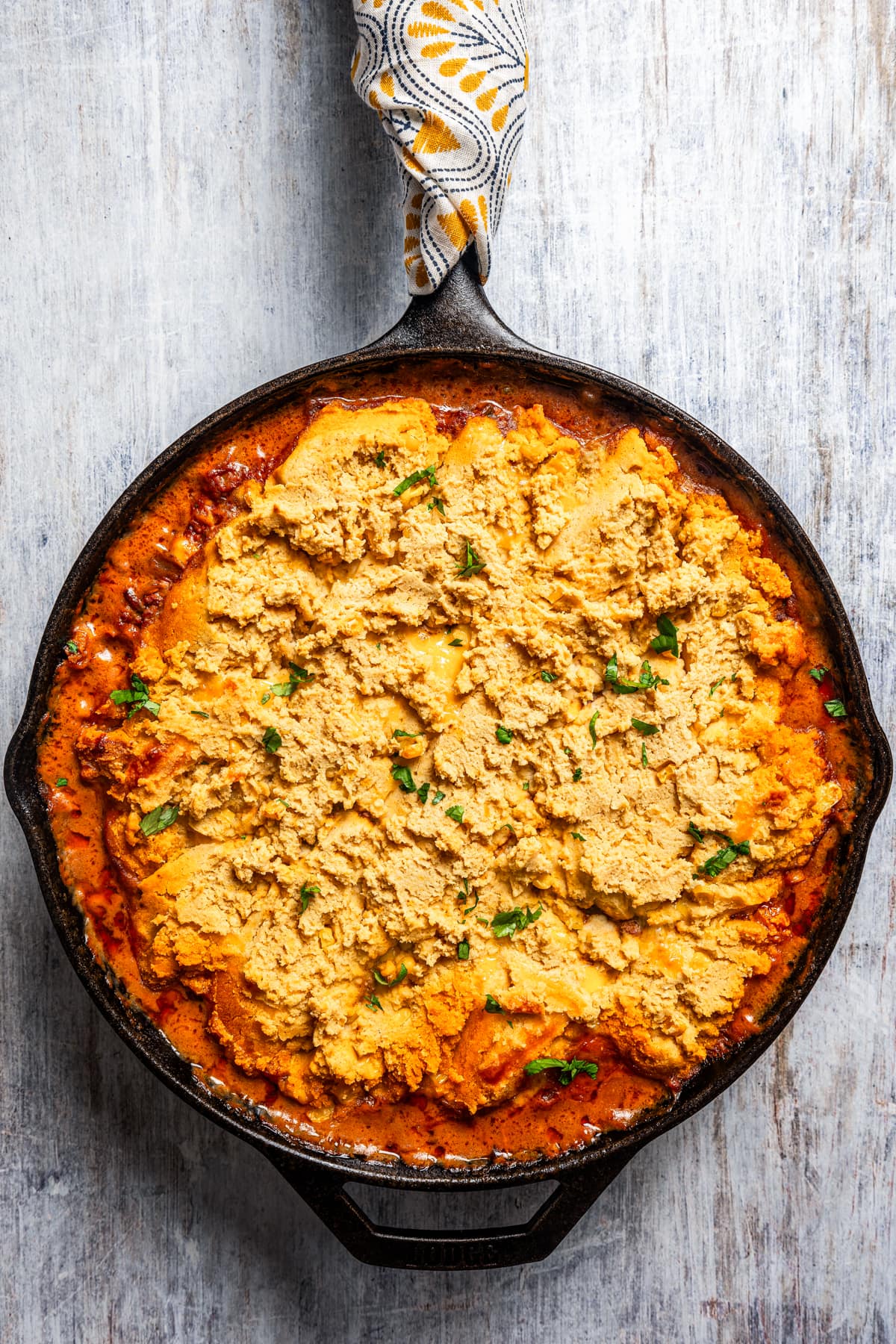

- Prep. Preheat the oven to 400°F.
- Saute the veggies. Heat the olive oil in an oven-safe skillet over medium-high heat. Add the onion and bell pepper and saute until the onion is translucent. Add the garlic and saute until fragrant.
- Brown the beef. Add the beef to the skillet and cook until golden brown and cooked through, crumbling it as you go.
- Add some flavor. Stir in the corn, enchilada sauce, and green chilis. Season with salt and pepper as desired.
- Make it cheesy. Stir in the sour cream and cheese. Cook until the cheese has melted. Turn the heat off.
- Make the topping. Whisk together the masa, baking powder, seasonings, chicken broth, and butter until smooth. Fold in the corn and cheddar cheese.
- Assemble. Spread the topping over the contents of the oven-safe skillet.
- Bake. Bake for 40 minutes.


Recipe Tips and Variations
- Select an oven-safe skillet. Because you will be baking the tamale pie in the same skillet you make the filling in, be sure to use an oven safe skillet such as a cast iron.
- Don’t crowd the pan. When cooking the beef, it is important not to crowd the pan so the beef browns and not steams. I used a 14-inch skillet, which accommodated everything perfectly.
- Drain. Fully drain the corn and green chilis before adding them to the mix.
- Toothpick test. Insert a toothpick into the topping of the pie to make sure it’s cooked through. Just into the topping – not the filling. If the toothpick comes out with just a few crumbs, it’s done. If the batter is clinging to it, you need to bake the pie for a bit longer.
- Turn up the heat. If you like spice, I suggest selecting a medium or spicy enchilada sauce and/or sauteing a seeded and diced jalapeno along with the onion and bell pepper. You could also add a bit of cayenne to the batter for the topping.
- Try a different protein. You can easily substitute ground turkey or chicken for this recipe. If you don’t eat meat, try Impossible Meat.
- Fun mix-ins. Consider adding 1/2 cup black beans to the filling. More sauteed veggies are great, too.
- Experiment with cheese. I love the cheddar here but pepper jack would be fun as well. So would crumbled Cojita.
Serving Suggestions
In keeping with the Mexican theme, I love serving a slice of tamale pie with some good ol’ fashioned rice and beans.


Proper Storage
- To store. Let the tamale pie cool completely before storing it away in an airtight container. You can keep it in the fridge for up to 4 days or in the freezer for up to 3 months.
- To reheat. Transfer the leftovers to the fridge to thaw (if frozen) before arranging slices in a single layer in a baking dish. Cover and bake for 20 minutes at 350°F or until heated through. Alternatively, microwave a slice or two in 30-second intervals until warm.
More Mexican-Inspired Dinner Ideas
-
Prep. Preheat the oven to 400°F.
-
Saute the veggies. Heat the olive oil over medium-high heat in a 14-inch oven-safe, heavy-bottomed skillet. Add the onion and bell pepper to the pan. Saute for 3 to 4 minutes or until the onion is translucent. Add the garlic and saute until fragrant.
-
Brown the beef. Add the ground beef to the skillet and cook until browned and cooked through, breaking it apart with a wooden spoon as you go.
-
Add some flavor. Stir in half of the corn, enchilada sauce, and green chilis. Give it a taste and season with salt and pepper as needed.
-
Make it cheesy. Stir in the sour cream and 1 cup cheddar cheese and cook until the cheddar has melted. Turn the heat off and set aside.
-
Make the topping. In a large bowl, whisk together the masa, baking powder, salt, smoked paprika, cumin, chicken broth, and melted butter until smooth. Fold in the remaining corn and cheddar cheese.
-
Assemble. Spread the masa topping over the contents in the skillet.
-
Bake. Pop the tamale pie in the oven and bake for 40 minutes or until a toothpick inserted into the masa topping comes out mostly clean.
-
Serve. Remove it from the oven and let the pie rest for 8 to 10 minutes before serving.
Serving: 10 ounces | Calories: 415 kcal | Carbohydrates: 31 g | Protein: 25 g | Fat: 22 g | Saturated Fat: 11 g | Polyunsaturated Fat: 2 g | Monounsaturated Fat: 7 g | Trans Fat: 1 g | Cholesterol: 87 mg | Sodium: 843 mg | Potassium: 590 mg | Fiber: 4 g | Sugar: 6 g | Vitamin A: 1241 IU | Vitamin C: 20 mg | Calcium: 195 mg | Iron: 4 mg
Nutritional info is an estimate and provided as courtesy. Values may vary according to the ingredients and tools used. Please use your preferred nutritional calculator for more detailed info.
[ad_2]











